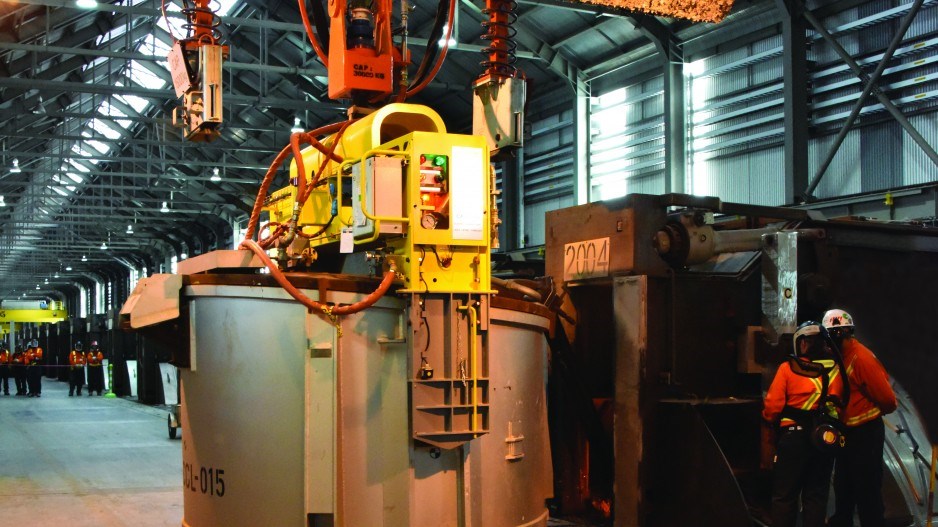Vancouver’s shipbuilding and construction industries could pay more for steel and aluminum if the U.S. revokes an exemption granted to Canada under plans to impose 25% tariffs on steel imports and 10% tariffs on aluminum imports.
But no community in B.C. would suffer more than Kitimat under the tariffs if they result in a worst-case scenario: layoffs or even a complete shutdown of the Rio Tinto Alcan (NYSE:RIO) smelter there.
The smelter is Kitimat’s biggest employer and taxpayer. With a workforce of 1,000, it employs one out of every six people in the town of 6,400 inhabitants.
It sells roughly $600 million worth of aluminum to the U.S. annually, so a 10% tariff would add $60 million to U.S. prices.
Despite a $6 billion expansion and modernization in 2014 and 2015 that increased the smelter’s production capacity and shrank its carbon profile, the smelter faces both international and local pressures.
While the modernization reduced some pollutants from the smelter’s operations, the increased production capacity also resulted in a doubling of the smelter’s sulphur dioxide (SO2) emissions.
Environmental groups such as DeSmog Canada and Skeena Wild Conservation Trust and Kitimat Mayor Phil Germuth have pressured the company to spend millions more on saltwater scrubbers to reduce SO2 emissions. Germuth attempted to pass a motion in January that would force the company to install new scrubbers, but it was voted down by council.
Meanwhile, the smelter also faces increased competition from China, which has been dumping cheap aluminum (much of it made from coal power) into Canada, the U.S. and elsewhere. Should American tariffs shut China out of the American market, there are fears that China will simply dump more cheap steel and aluminum into other countries, including Canada.
Ellis Ross, the Liberal MLA for Skeena, fears a 10% tariff on aluminum could be the last straw for the Kitimat smelter.
“When you add what they’re trying to deal with competitively – internationally – as well as the local pressure, it’s not looking good for the smelter in Kitimat,” Ross said.
“Even though they’re the cleanest smelter in the world, there’s local pressure to further reduce their emissions. This three-pronged attack – the local pressure, as well as the low-grade product from China and now this tariff on aluminum – I don’t know what Rio Tinto Alcan’s going to do with all this.”
Bruce Ralston, B.C. minister of jobs, trade and technology, is also worried.
“I think the biggest concern is that there’s 1,000 direct jobs in Kitimat,” Ralston said. “They made a huge investment … and the impact in that sector would be huge.”
The U.S. imports 50% of its aluminum from Canada, said Doug Hilderhoff, North America aluminum analyst for CRU Group, an American business intelligence firm.
He expects a 10% tariff would increase the price for aluminum in the U.S. to US$2,550 per tonne from US$2,330 per tonne.
The price for aluminum in the U.S. is based on the London Metal Exchange price, plus a regional premium. It’s the regional premium that would be affected by the tariff.
“If you had a pre-duty premium of $0.08 a pound, then we see that number up to about $0.18 to $0.20 a pound,” Hilderhoff said.
If the tariff is in place for a sufficient period of time, Hilderhoff said, a number of idled smelters in the U.S. would likely restart and begin displacing some of the aluminum that Canada currently exports.
“That would push out the need for some of the imports, but it certainly is not enough to fill the gap that the imports satisfy right now,” he said.




